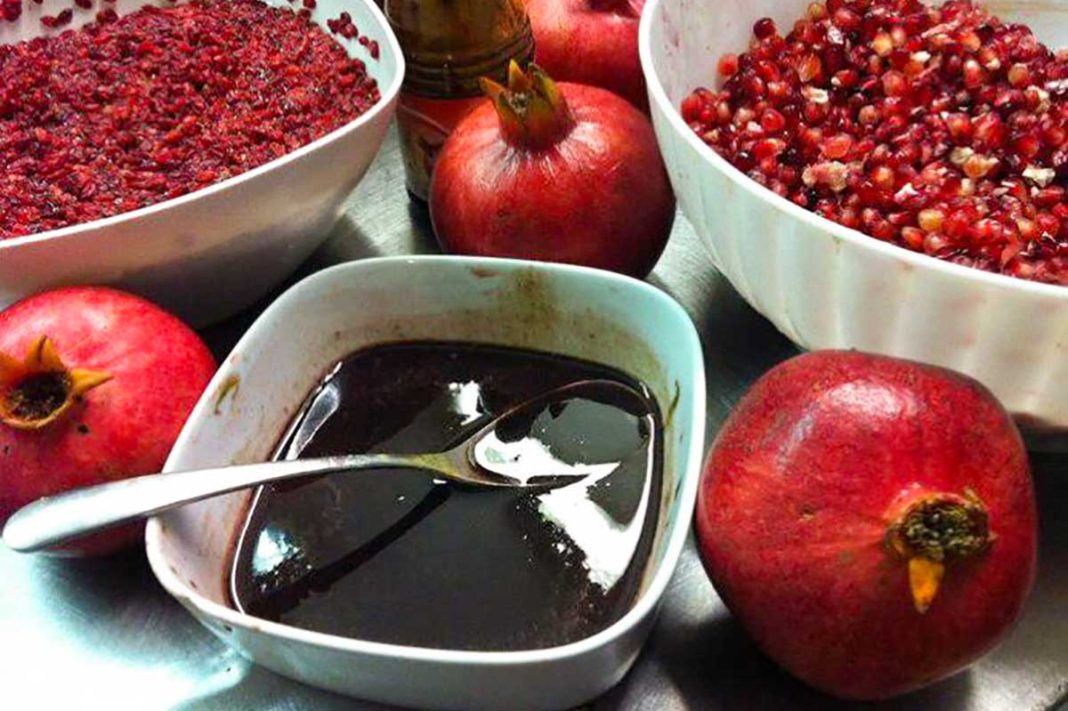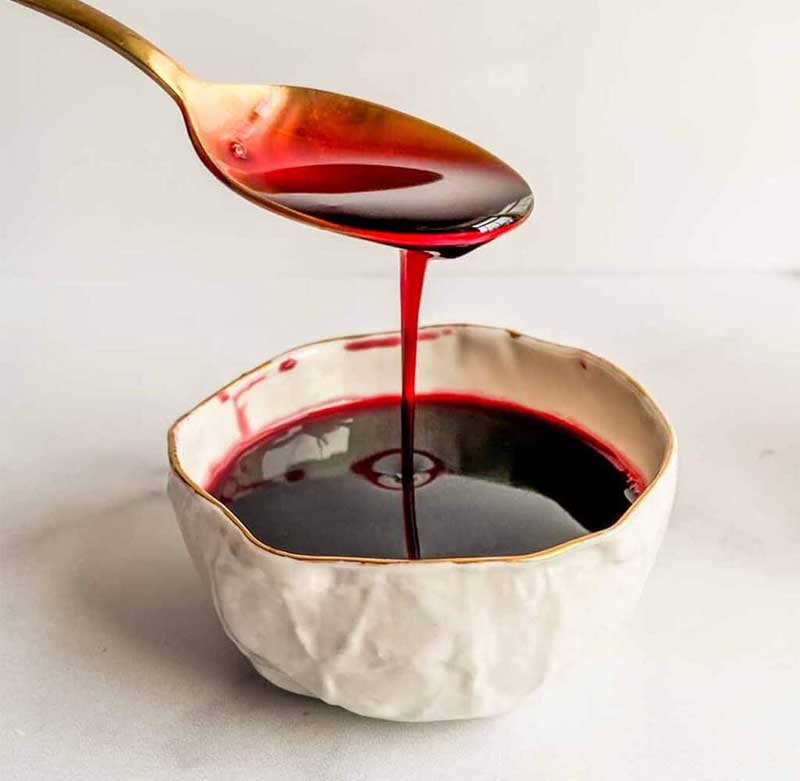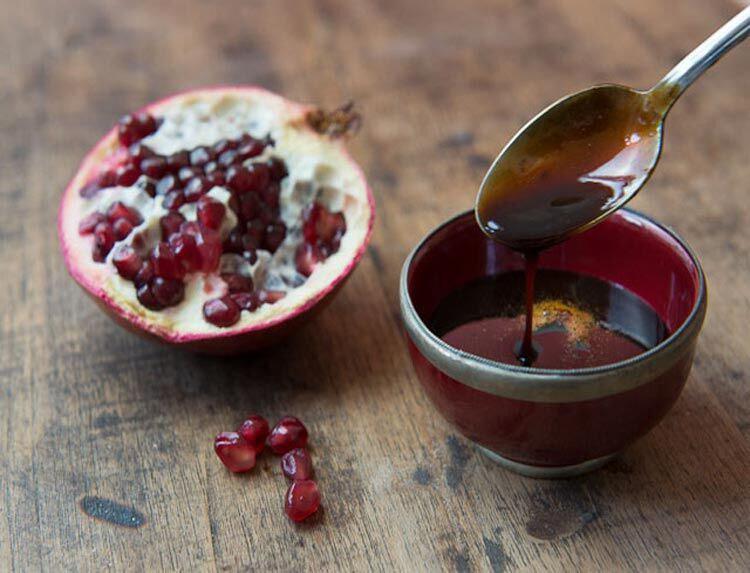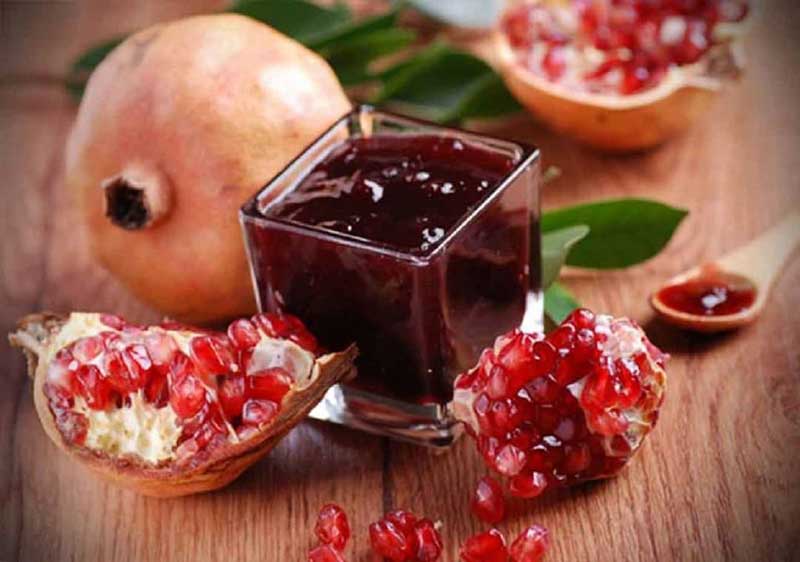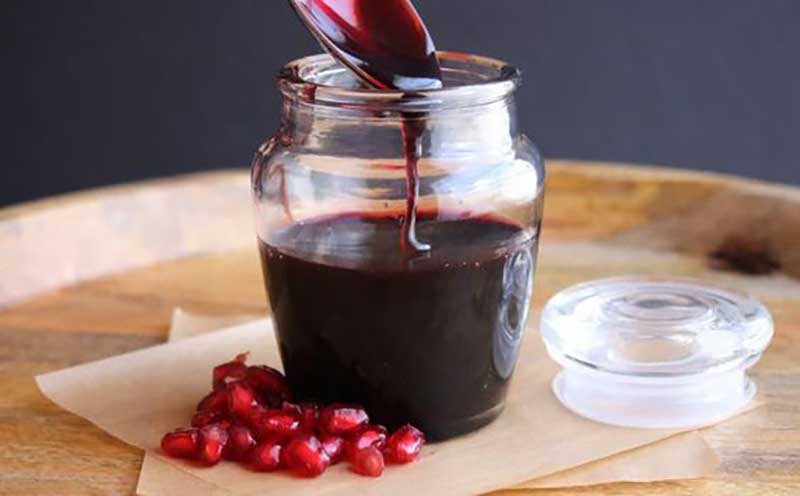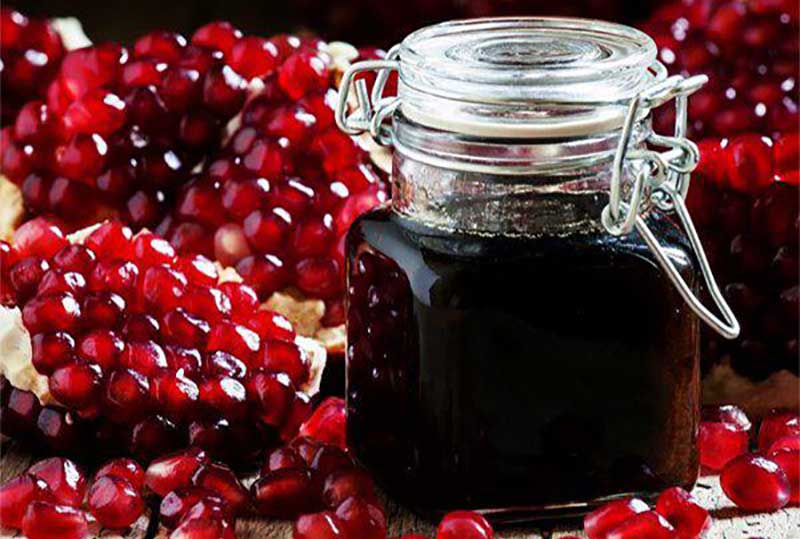One can buy various brands of the delicious Iranian flavouring, pomegranate paste, at the supermarket, but still the homemade sauce is much more popular.
Adding flavourings to food is believed to be the most attractive part of cooking. A combination of courage and creativity would be enough to find the desirable taste by playing with the flavourings and create the yummiest foods.
Ingredients for Pomegranate Paste
- Sour pomegranate: 8 kg
- Water: 3 cups
- Salt: 1 spoonful
Cooking Steps For Pomegranate Paste
Step 1
Remove seeds from pomegranate (Benefits) fruit carefully. Make sure that the pith is removed from the seeds. Put the seeds into a big pot, pour water onto them and allow it to simmer well for around 40 minutes. While the pomegranate seeds are boiling, crush them with a masher.
Step 2:
Run them through a sieve in order to strain out the seeds and collect the juice in a big pot. Crush the seeds on the strainer completely until only the kernels are left. Discard the kernels and strain the pomegranate juice several times to make sure that no kernel is remaining inside the sauce.
Step 3:
Pour the juice into the pot and stir it very well to reduce the base to a thick, paste-looking concentrate. Add salt and stir.
Pomegranate Paste Recipe Tips:
- If the pomegranate fruit is juicy, every 8 kg of pomegranate will produce one kilogram of paste.
- The thicker the paste, the later it will spoil and rot, and it would also look darker.
- In order to save costs, normally the broken and small pomegranates are used to make paste, which may not have a good appearance and are usually less expensive. This, however, would not affect the quality of the paste.
What matters is that the pomegranate must be juicy and red. The pomegranate seeds should not be old, rotten, decayed or dry, and its color should not be white or brown.
- The right color for a perfect pomegranate paste is pale to dark brown, as well as dark red. A black pomegranate paste is a sign that the concentrate has been burnt or has been mixed with other things, such as plum.
- Pour the pomegranate paste into glass jars and keep in the fridge. Use a clean and dry spoon to take the paste every time. Screw the jar lid down tightly every time to prevent decay.
Additional Points on Pomegranate Paste
1. Keep in mind that pomegranate paste gets thicker after cooling down, so do not let it thicken excessively when on the stove.
2. The pomegranate paste gets too stiff if thickened too much, while it will get all moldy if it is too thin, so make sure you get it to the adequate level of thickness.
3. Avoid adding sugar or any other additives to the pomegranate paste you make at home. The reason is that doing so will cause the pomegranate paste to form molds more quickly.
4. There is an alternative method to prepare pomegranate paste and it is using a meat grinder. In this method, you should separate pomegranate seeds and put them in the meat grinder. This could be also done with certain home juice makers and industrial meat grinders. Using this method leaves no juice in the seeds so you can dispose of them.
One of the most popular flavourings in the Iranian kitchen is the pomegranate paste which gives a delicate and unique flavour to various foods. For instance, it is used to cook Fesenjan stew, chicken, fish, kabob, sour chicken, etc.
Read more:
- Pomegranate harvest from Abarkooh gardens in Yazd
- Pomegranate harvest starts in Middle East’s only reservoir of sour pomegranate
